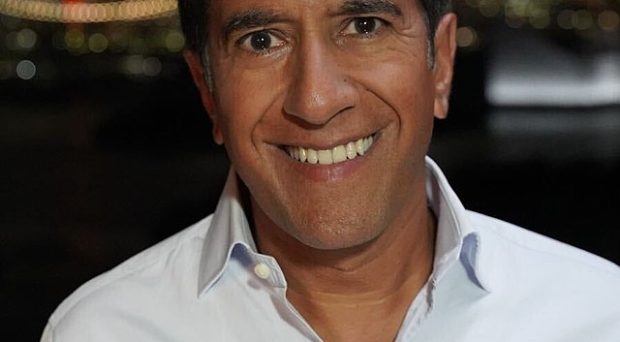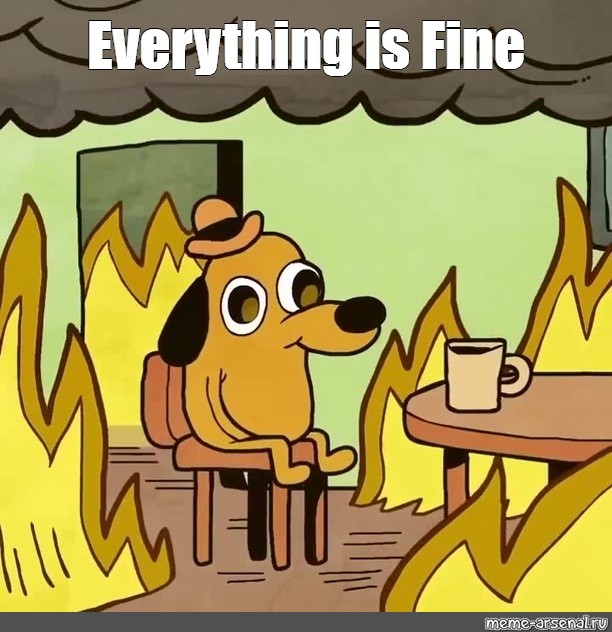
Dr. Sanjay Gupta is an American neurosurgeon, Associate Professor of neurosurgery at Emory University School of Medicine, and the chief medical correspondent at CNN. In 2021, he published a book titled “World War C: Lessons from the COVID-19 pandemic and How to Prepare for the Next One“. I chose his book as the next one on my quest to read and review every popular science book published on the COVID-19 pandemic.
I’m happy to say that I found Dr. Gupta’s book interesting, easy-to-follow, generally credible and overall a worthwhile read. The title at first requires some explanation, with C obviously referring to COVID-19. In his designation of the COVID-19 pandemic as World War C, he argues that the pandemic is a war between humanity and SARS-CoV-2, and it will be a defining moment in the life of our children, just as the 1918 flu pandemic was for older generations. In terms of its structure, the first part of the book provides a fascinating recounting of the inner workings of the response to the COVID-19 pandemic during the Trump administration. It also contains two chapters on viruses and vaccinations, the immune system, the history of anti-vaccine sentiments, as well as thoughtful responses to misconceptions. The second part of the book shifts gears completely, focusing on Dr. Gupta’s plan to prepare for the future, either the continuation of this pandemic, or the next one, by making us pandemic P.R.O.O.F (see later). This makes for a somewhat disjointed structure, but the author makes every effort to connect these two very different parts.
 I learned many things from Dr. Gupta by reading this book. For example, I did not know before that the word virus denotes the venom of a snake and is derived from the Latin word for “poison”. I also developed a new-found appreciation for many public health officials serving during the Trump administration. According to the interviews summarized in his book, the problem with the response to the COVID-19 pandemic wasn’t the quality or expertise of the officials in charge, but the politicization and attitude of government officials outside of public health, in addition to systemic issues. As Dr. Gupta quotes Dr. Robert Kadlec about the failed response, “Hubris. Hubris was the cause of death in this autopsy.” For example, Dr. Deborah Birx, often painted as inefficient in her visible role as the White House coronavirus task force coordinator, was hamstrung by the President and his political appointees. In response, she decided to travel the country on Vice President Mike Pence’s plane (and with his support) to educate state public health officials of the proper guidelines of mitigation, often in direct conflict with the public messaging coming out of the White House. She kept working in this job, to save as many lives as possible, despite fully knowing that her reputation will be tarnished by being involved in this chaotic response. I also learned a lot about the difficulties involving the first COVID-19 PCR tests coming out of the CDC. These tests originally worked at the CDC, but could not be validated in public and academic labs, and had to be recalled. Beyond that, the CDC did not have the capacity to mass-produce sufficient numbers of PCR tests to distribute them, or have a system in place to receive and process them in-house at the volume required in a raging pandemic. This fact seems to make a lot more sense now, after two years of supply chain bottlenecks, instead of seeming as the staggering failure of the CDC.
I learned many things from Dr. Gupta by reading this book. For example, I did not know before that the word virus denotes the venom of a snake and is derived from the Latin word for “poison”. I also developed a new-found appreciation for many public health officials serving during the Trump administration. According to the interviews summarized in his book, the problem with the response to the COVID-19 pandemic wasn’t the quality or expertise of the officials in charge, but the politicization and attitude of government officials outside of public health, in addition to systemic issues. As Dr. Gupta quotes Dr. Robert Kadlec about the failed response, “Hubris. Hubris was the cause of death in this autopsy.” For example, Dr. Deborah Birx, often painted as inefficient in her visible role as the White House coronavirus task force coordinator, was hamstrung by the President and his political appointees. In response, she decided to travel the country on Vice President Mike Pence’s plane (and with his support) to educate state public health officials of the proper guidelines of mitigation, often in direct conflict with the public messaging coming out of the White House. She kept working in this job, to save as many lives as possible, despite fully knowing that her reputation will be tarnished by being involved in this chaotic response. I also learned a lot about the difficulties involving the first COVID-19 PCR tests coming out of the CDC. These tests originally worked at the CDC, but could not be validated in public and academic labs, and had to be recalled. Beyond that, the CDC did not have the capacity to mass-produce sufficient numbers of PCR tests to distribute them, or have a system in place to receive and process them in-house at the volume required in a raging pandemic. This fact seems to make a lot more sense now, after two years of supply chain bottlenecks, instead of seeming as the staggering failure of the CDC.
Any book written about COVID-19 during the ongoing pandemic was bound to be out-of-date as soon as it got off the presses. This book is no exception, as it was written before the emergence of the Omicron variant, and it’s many subvariants, the resulting large wave of infections, and the high levels of partial immunity in its wake. In addition, the book echoes predictions of a new “roaring 20s”, not having been able to foresee the war in Ukraine, and the ongoing economic upheavals of our time. Even so, this book feels very much up-to-date, with recommendations that still ring true today.
For example, Dr. Gupta addresses the subjective estimation of relative risk levels as a way to guide behavior in a world where SARS-CoV-2 is endemic, and will not go extinct. As he describes, all activities in life are associated with risks, even chosing to do nothing at all. Therefore, both the relative risks and benefits of different activities, both to ourselves, and others in our community need to be evaluated, based on limited information. In terms of COVID-19, it is fairly difficult to estimate the risk of infection, given local case counts vastly underestimate true infections, and CDC Community Level metrics combine hospitalization and case measures. As an example, Dr. Gupta suggests a 5 percent positivity rate as the threshold for an acceptable level of risk before mitigation measures need to be taken. In Spokane County, Washington State, where I live, the current test positivity rate reported by the Washington State Department of Health is 14.2%. However, this is based on about 1,200 tests submitted each day, and it’s unlikely that the people tested are a representative sample of the about 540,000 people in Spokane county. Due to contact tracing and symptom monitoring, infected people are much more likely to be tested, which is great for limiting transmission, but not for estimating risk. At the same time, most people test at home, and don’t report their results to the Department of Health, especially if its negative, making it even more difficult to estimate the risk of infection. Furthermore, given vaccine-derived and acquired immunity, the availability of antiviral drugs, different variants and better disease management, for most people the risk of hospitalization and death due to COVID-19 have reduced substantially, putting the risk of SARS-CoV-2 in a different perspective.
Beyond thinking about risk, Dr. Gupta lays out a well-thought out plan for making us Pandemic P.R.O.O.F for the next pandemic, by applying the lessons learned on this one. The acronym he came up with stands for Plan Ahead; Rethink and Rewire Risk in Your Brain; Optimize Health; Organize Family; and Fight for the Future of Us, each in their own chapters. These chapters are full of sensible and useful advise, from countering misinformation to nurturing your microbiome and dealing with long-COVID. However, my most favorite chapter was the last one, titled Fight for the Future. This chapter focused on our global interdependence and the amazing achievements of the pandemic, such as the incredibly rapid development and distribution of the mRNA vaccines, and celebrated the best moments of the pandemic when people were trying to help each other. Throughout his book, he encourages us to learn from this pandemic and move forward to be better prepared for the next one. I wholeheartedly recommend this book as a good record and a useful reminder of what we experienced during the COVID-19 pandemic in the United States.

Comments